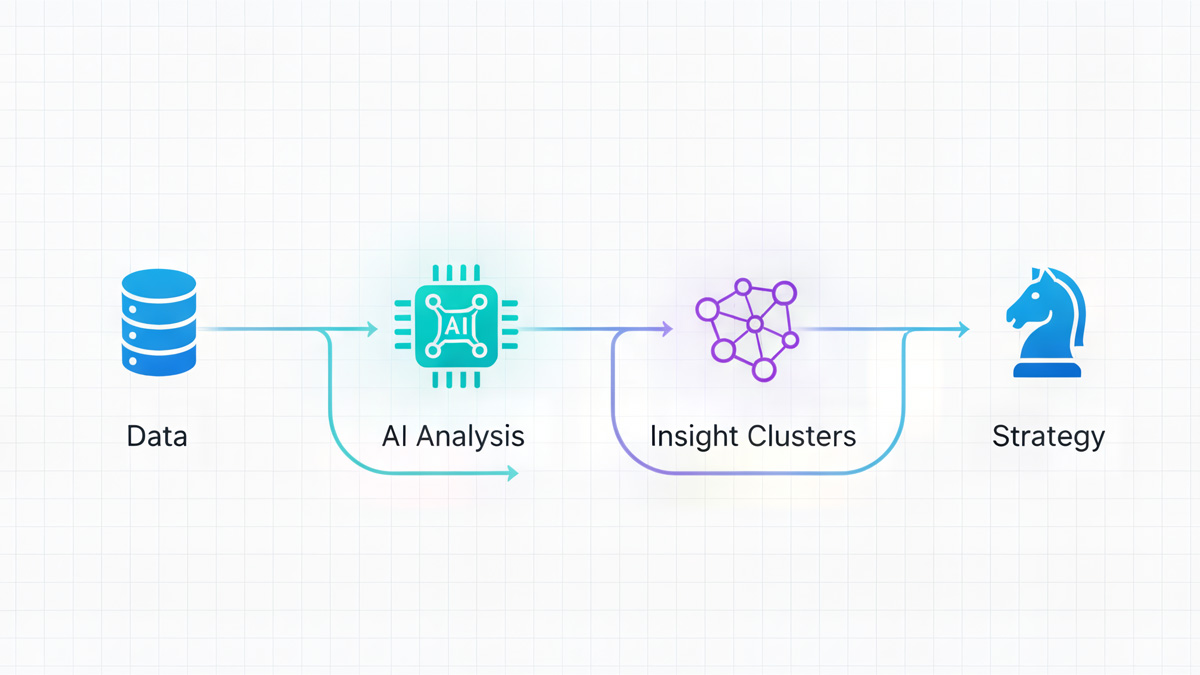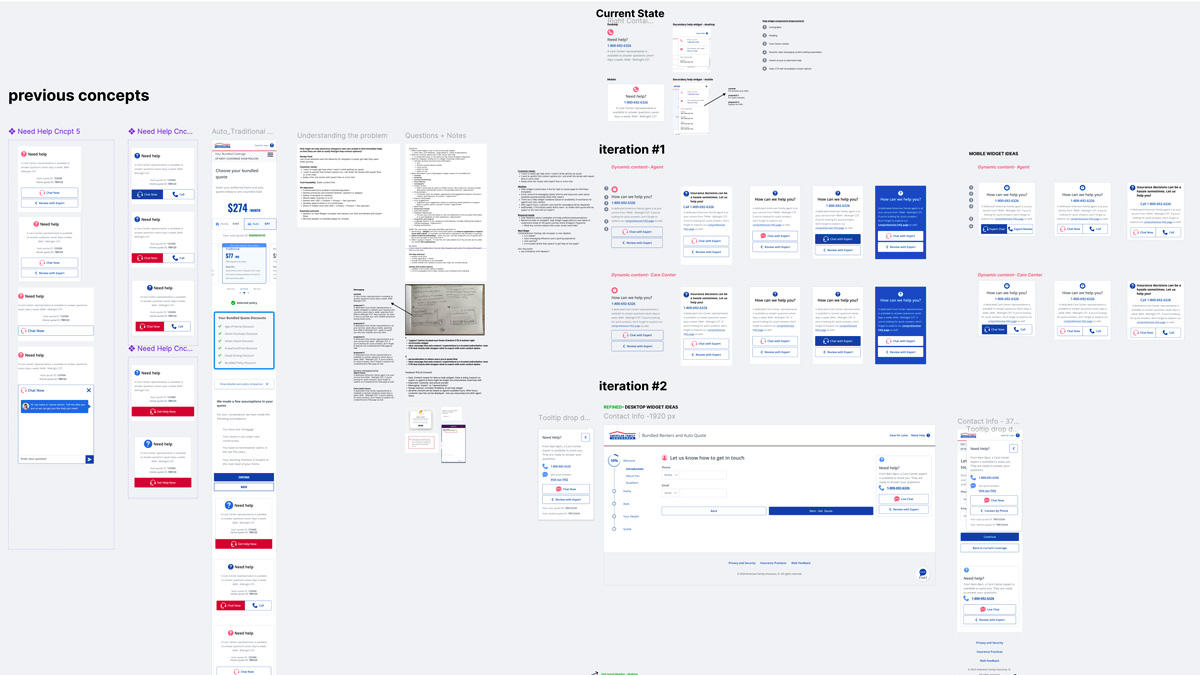
AFI: Self-Service Sales Transformation
UX Strategist — Led cross-functional collaboration to grow digital sales, improve retention, and establish enterprise design system foundations.
At a Glance
- Digital sales transformation
- Self-service quote, underwrite, bind
- JD Power: #22 → #1
- Enterprise design system (21 brands)
- AI-assisted research & workflow
Project Overview
- Client: American Family Insurance
- Role: Senior UX Strategist
- Timeline: Aug 2022 – Jul 2025
- Team: 35 designers, product managers, CX, research, and engineering partners
Tools & Methods
- Design Thinking Frameworks
- AI-Assisted Discovery & Insight Synthesis
- Figma, Miro, and Microsoft Teams Collaboration
- Nielsen Norman Group UX Maturity Evaluation
- Design System Architecture & Governance
- Accessibility & Inclusive Design Standards
Challenge
- American Family Insurance’s digital sales experience was fragmented across multiple legacy systems, leading to customer confusion.
- Different usage patterns drove unique drop-off behaviors: some customers were shoppers comparing quotes, others were ready to buy, some used the tool to validate agent-provided quotes, and others reached “hard stops” requiring agent support.
- Lack of behavioral insight made it difficult to tailor the experience to user intent or identify when to transition from digital to human assistance.
- Distributed UX and product teams worked in parallel with limited access to direct customer feedback, creating misalignment and redundant efforts.
- Digital satisfaction scores lagged behind competitors, signaling the need for a cohesive, insight-driven strategy that unified the self-service experience end-to-end.
Understanding how customers used — and abandoned — the journey became the foundation for redesigning AmFam’s digital sales platform around clarity, intent, and measurable performance.
Challenge Example
A talented remote team, scattered across tools and time zones — until Design Thinking created focus, alignment, and flow.
Vision & Objectives
- Unite distributed design and product teams around a shared digital-sales vision and repeatable delivery rhythm.
- Leverage AI and behavioral insights to accelerate discovery, guide customer decisions, and inform product strategy.
- Build an enterprise design-system framework spanning 21 brands — aligning UX, engineering, and brand for faster, more consistent releases.
Anchored in collaboration, clarity, and design-led transformation — a vision that scaled human creativity and AI-assisted innovation across the enterprise.
Approach
- Operationalized Design Thinking for a fully remote environment — facilitating collaborative workshops in Miro, Figma, and Microsoft Teams that aligned product, CX, and engineering in real time while building shared language and creative confidence across teams.
- Evaluated UX maturity using Nielsen Norman Group’s model to assess team performance and identify gaps. Introduced tailored frameworks and collaboration rituals that helped a 35-designer organization move beyond a mid-level assessment toward strategic alignment and measurable growth.
- Activated AI-assisted discovery to synthesize insights from behavioral analytics, market research, and existing data — enabling faster, evidence-based decisions and demonstrating how AI could enhance the UX research process.
- Prototyped AI-driven “North Star” experiences — conceptual conversational interfaces that envisioned how customers could explore complex insurance choices with clarity and confidence. While not implemented, these prototypes informed long-term digital strategy and product vision.
By pairing structured maturity evaluation with Design Thinking and AI innovation, UX evolved from a functional discipline to a strategic capability — scaling consistency, collaboration, and creative impact across the enterprise.

Mapping how AI could turn behavioral data into actionable insight clusters.
When empathy, systems, and intelligence aligned — the enterprise finally found its rhythm.
Transformation
- Independent teams became interdependent collaborators—aligned through shared rituals, accessible frameworks, and a common design language that bridged 21 brands.
- AI shifted from efficiency tool to creative partner, assisting with persona synthesis, documentation, and contextual customer guidance across the sales journey.
- Visionary prototypes unified leadership around possibility, turning abstract concepts into tangible strategy for AI-enabled customer experiences.
The shift from fragmented workflows to a unified, insight-driven culture redefined how AmFam’s teams collaborated, designed, and delivered value—embedding design and AI as catalysts for transformation.
Outcomes
Takeaways
- Distance isn’t a barrier — clarity is. Remote collaboration and structured frameworks turned distributed delivery into measurable progress.
- UX must evolve from service to strategy. Many organizations still treat design as a production function, missing its value as a driver of business alignment, risk reduction, and product-market clarity.
- Frameworks create foresight. Investing in Design Thinking and evidence-based discovery prevents costly rework later — shifting “fix it later” cultures toward “design it right” outcomes.
Building stronger partnerships between UX, product, and business isn’t just about process—it’s about changing how organizations think, decide, and invest in customer experience.


